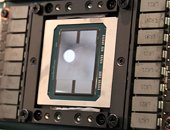Saturday, August 13th 2016

Samsung to Optical-Shrink NVIDIA "Pascal" to 14 nm
It looks like NVIDIA won't skip the 14 nm process en route sub-10 nm nodes, despite meeting its energy-efficiency targets with the 16 nm FinFET node, after all. The company has reportedly concluded talks with Samsung Electronics, to optically-shrink its current GeForce "Pascal" architecture down to the newer 14 nanometer FinFET node, by Samsung. It's unclear as to whether specific upcoming (unreleased) Pascal GPUs will get 14 nm treatment, or if this is a series-wide die-shrink of the kind NVIDIA did between the 65 nm and 55 nm nodes. The Samsung-made 14 nm "Pascal" GPUs should enter production before year-end.
Source:
Reuters

45 Comments on Samsung to Optical-Shrink NVIDIA "Pascal" to 14 nm
An atom size is between 0.2 - 0.3nm, which is looooong way from 3nm even.
Controlling where an electron should or shouldn't go when you only have 10 atoms between them is difficult nonetheless.
But Samsung's "14nm" FinFET isn't really significantly smaller than TSMS' "16nm" FinFET, and the 16nm HP node is working quite well, so if any chips are moved at all it's because of prize, not because of "shrinking".
tiny crystal of beryllium ions??
~500 qubits translates to about 500 GFLOPS in terms of normal processor loads but upwards of 5 PFLOPS when dealing with problems where superposition is useful (true and false simultaneously):
newatlas.com/d-wave-quantum-computer-supercomputer-ranking/27476/
Every two years, they've been doubling the number of qubits and the growth in performance is damn near exponential. In solving problems conducive to its design, it will be passing up traditional supercomputers if it hasn't already. NASA, Google, etc. are buying them up as fast as they can make them.
8800GT->9800GT->GTS240
8800GTS 512->9800GTX->9800GTX+->GTS 250
1. Are you really suggesting samsungs 14nm manufacturing node is up-to task to deliver such high freqs. Or even higher than tsmc.
2. Widening memory bus to 512bit and then use hbm, what?
3. Reaching Feb2017 chips should have been taped out already. And it would have leaked somewhere.
If they are forced to update something on that time(feb2017), it will be based on current gp104 chips with faster gddr5x and higher core clocks and gp102 parts with different configurations other than anything else.